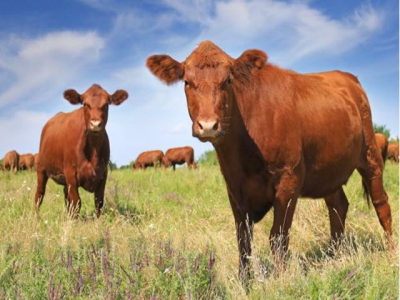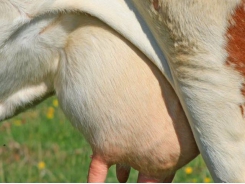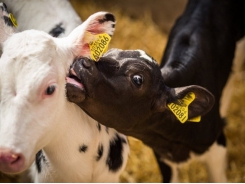Grass tetany preventable in grazing beef cows

Plan ahead to minimize metabolic disorder by providing high-magnesium supplement prior to turning cows out onto lush spring pasture.
While winter maintains its strong grip on many areas of the U.S., spring is approaching, with grass and other forages greening up.
University of Nebraska-Lincoln (UNL) associate professor and range management cow/calf specialist Karla H. Jenkins noted in a recent "UNL BeefWatch" newsletter that beef producers are anxious to get cows out to grass, but areas that have predominately cool-season forages tend to have lush spring growth that can lead to grass tetany in cows.
Jenkins, based at the UNL Panhandle Research & Extension Center in Scottsbluff, Neb., said although treatments are available for afflicted cows if caught quickly enough, prevention is always the best policy.
Grass tetany occurs when circulating magnesium is low in beef cattle, Jenkins noted, explaining that symptoms include staggering, convulsions, excitability and twitching and can result in death. While it can affect growing cattle, grass tetany generally affects older lactating cows.
According to Jenkins, the magnesium requirement for the pregnant cow is 0.12% of the diet on a dry matter basis and jumps to 0.2% with lactation. Moreover, magnesium levels in colostrum are three times higher than in the milk during the rest of the lactation, she added.
Unlike some other minerals, magnesium is not stored and mobilized in the tissues for times when it is deficient in the diet, she said. Magnesium is absorbed across the rumen wall, and how much magnesium is circulating in the blood is highly dependent upon intake.
Additionally, if the feed/forage is high in potassium or nitrogen — as many lush, growing forages can be — magnesium absorption can be compromised, Jenkins said. Cool, cloudy days associated with wet spring weather often increase the risk of grass tetany issues.
To help prevent issues with grass tetany, producers should start providing a high-magnesium mineral to cows about a month before turning them out onto lush pasture to get them used to consuming it and continue to provide a high-magnesium supplement until grass starts to elongate and mature, when the risk of grass tetany lessens, Jenkins said.
Although providing a high-magnesium mineral helps reduce the incidence of grass tetany, producers should talk to a local veterinarian and have a treatment plan in place for cows that do succumb to grass tetany, as treatment must take place quickly in those cows, Jenkins noted.
Related news
Tools

Phối trộn thức ăn chăn nuôi

Pha dung dịch thủy canh

Định mức cho tôm ăn

Phối trộn phân bón NPK

Xác định tỷ lệ tôm sống

Chuyển đổi đơn vị phân bón

Xác định công suất sục khí

Chuyển đổi đơn vị tôm

Tính diện tích nhà kính

Tính thể tích ao




 New camera-in-a-capsule method provides closeup of gut issues
New camera-in-a-capsule method provides closeup of gut issues  Sodium butyrate may boost gain, feed efficiency in…
Sodium butyrate may boost gain, feed efficiency in…